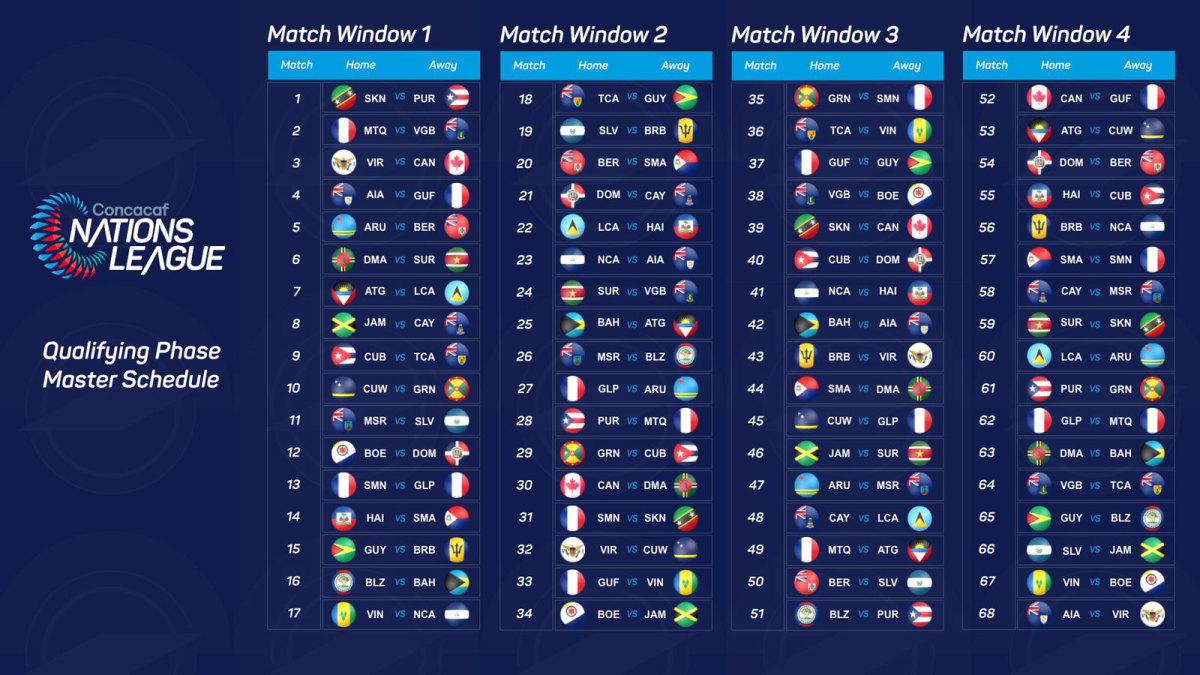New-Look Concacaf Unveils Format, Rules for Nations League Competition

Concacaf on Wednesday morning—and that’s “Concacaf” now, not “CONCACAF”—unveiled a new logo, brand and additional details of the Nations League competition announced last November.
Qualification for the new tournament will kick off this fall, and the USA and Mexico will begin Nations League play in September 2019. That ensures the Americans’ next competitive contest will be in about 15 months, at the first game of the 2019 Gold Cup.
Before that Gold Cup, which will expand to 16 participants, 34 national teams will play four qualifying games each in order populate the three Nations League tiers. In addition, the results of those four matches will determine which 10 teams join the USA, Mexico, Costa Rica, Honduras, Panama and Trinidad & Tobago (the 2016-17 Hexagonal participants) at the 2019 Gold Cup.
How CONCACAF League of Nations Alters Competitive Landscape for USA, Region
The Nations League is Concacaf’s response to the analogous tournament in Europe, which will reduce the number of friendlies played across the world. It’s also designed to replace a local competition structure that Concacaf believed left too many of the region’s smaller nations with limited opportunities to play.
“The system of friendly competition has not provided a sufficient level of football for most of our federations,” Concacaf general secretary Philippe Moggio said at Wednesday’s ceremony in Miami. He said the Nations League was launched “to maximize international match opportunities for all our members,” and ensure that “no one goes home—no one sits out a cycle.”
The Nations League will comprise three tiers—A, B and C—and will be contested following the Gold Cup in the fall of 2019. The aforementioned six seeds, including the USA and Mexico, will be joined in 12-team League A by six qualifiers and divided into four groups of three countries each. Each side will play four games—two home, two away—against the other two members of its group. The four group winners will advance to the championship round in March 2020 (the format of which wasn’t announced Wednesday).
The third-place finisher in each group will be relegated to League B. The B tier will comprise four groups of four teams each, the winner of which will be promoted to A for the second edition of the Nations League. The fourth-place finisher in each B group will drop to League C, which contains 12 or 13 teams (the Guatemalan federation currently is under FIFA suspension, hence the wiggle room).
So for the USA and Mexico, the Nations League will require four games in the fall of 2019 and then, if they advance, one or two more in March 2020. Concacaf didn’t explain how the composition of League A’s groups would be determined.
The 34 unseeded countries were drawn Wednesday into a qualifying schedule that will determine the remaining six teams in League A and the participants in B and C, as well as 10 Gold Cup spots. Concacaf ranked those 34 national teams, split them into four pots and then plugged each team into the qualifying schedule that takes place during this fall’s three FIFA windows and then the one in March 2019.

After all of the countries have played four games, they’ll be ranked according to points, goal differential and other tiebreakers. The top six will slide into League A, the next 16 go to B and the remainder to C.
Canada will have to participate in the opening phase. It will host Dominica and French Guiana and travel to U.S. Virgin Islands and St. Kitts & Nevis during the qualifying round.
